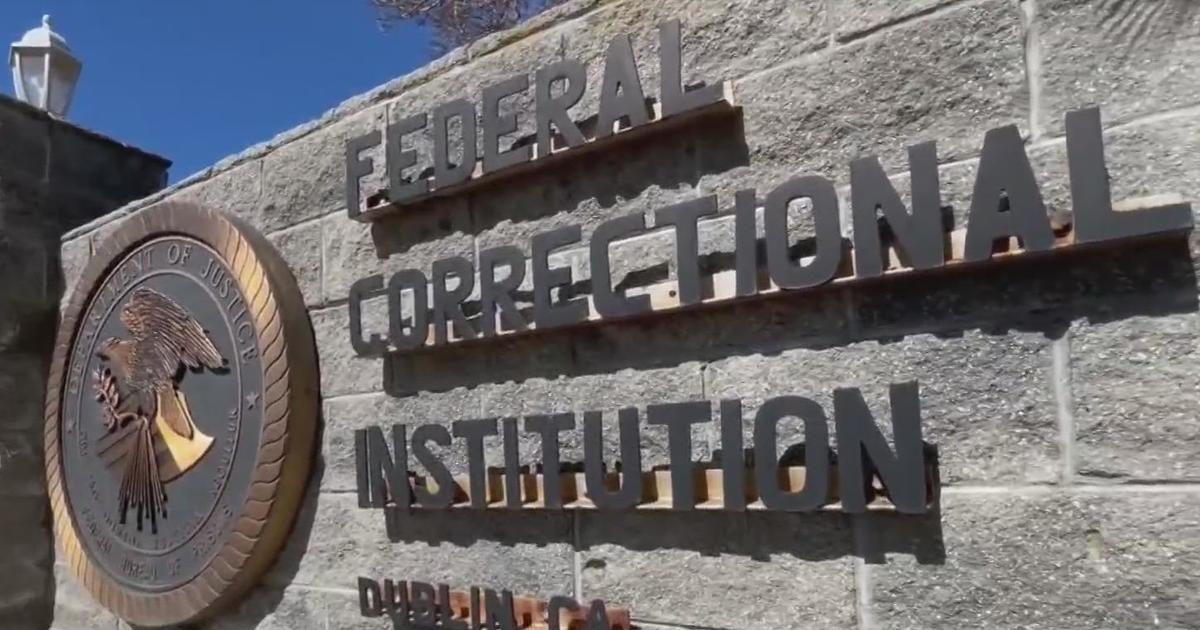California Adopts Sweeping Greenhouse Gas Rules
SACRAMENTO (AP) -- California regulators on Thursday approved the first system in the nation to give polluting companies such as utilities and refineries financial incentives to emit fewer greenhouse gases.
The Air Resources Board voted 9-1 to pass the key piece of California's 2006 climate law — called AB32 — with the hope that other states will follow the lead of the world's eighth largest economy. State officials also are discussing plans to link the new system with similar ones under way or being planned in Canada, Europe and Asia.
California is launching into a "historic adventure," said Mary Nichols, chairwoman of the state's air quality board.
"We're inventing this," she said. "There is still going to be quite a bit of action needed before it becomes operational."
California is trying to "fill the vacuum created by the failure of Congress to pass any kind of climate or energy legislation for many years now," said Nichols.
A standing-room only board chambers featured testimony from more than 170 witnesses Thursday. Outside the chambers, a few climate change skeptics held signs reading "Global Warming: Science by Homer Simpson."
Some businesses that would fall under the new rules say the system could dampen California's already flagging economy, complicate lawmakers' efforts to close a $28.1 billion revenue shortfall and lead to an increase in the price of electricity.
The rate increases, however, would still need approval from the state.
Gov. Arnold Schwarzenegger told the board he is sensitive to the recession, but argued that many of the new jobs being created under the system are in the clean technology industry.
"The real jobs we're creating right now are green jobs. Since 2006 or so green jobs have been created 10 times faster than in any other sector, so it's also an economic plus," he said.
But he said reducing greenhouse gas pollution is not just about climate change, but about human health and national security.
"I despise the fact that we send $1 billion a year to foreign places for our oil and to places that hate us. We send this money to people that hate us and that are organizing terrorists and trying to blow up our country," he said.
Supporters say the system will help spur economic recovery and innovation, pushing business to invest in clean technologies.
They say the billions of dollars the state collects in the system could help fund clean air programs and help offset any increases in utility rates. Details of the uses of these new funds is still uncertain.
California has already enacted the strictest climate-related regulations in the country involving renewable energy mandates for utilities, tighter fuel-efficiency standards for automobiles and low-carbon fuel standards.
The state's landmark climate law had a Jan. 1, 2011, deadline for devising and enacting the so-called cap-and-trade system.
Here's how it would broadly work:
A company that produces pollution, such as a utility or a refinery, buys a permit from the state that allows it to send a specified amount of carbon dioxide and other greenhouse gases into the air each year.
Those permits could then be bought and sold by the polluters in a marketplace.
If a company in Fresno is 15 percent under its pollution allowance, it can sell the unused portion to a company in Long Beach that has exceeded its quota. The Fresno company gets to keep the money.
Polluters can even make a profit, if the marketplace sets a price above the initial cost of the permit.
The lone dissenting board member, Dr. John Telles, said he had concerns that the new market created by the regulation was too vulnerable to cheating.
"We're potentially vulnerable here to be manipulated," he said. "And I don't see enough safeguards in the design of the market."
The board's staff said it would be working on market issues in the coming year before the launch of the program, but recognized that they were creating something that had not been tried before.
Adding another wrinkle, a company that exceeds its allowance can also buy what are called "offsets." These can be bought by companies with forestry or other projects that reduce greenhouse gases.
Those companies can sell those to polluters in the marketplace, also at a profit.
Under the new California rules, regulators would enforce limits on heat-trapping gas emissions beginning in 2012, eventually including 85 percent of the state's worst polluters.
The amount of allowed emissions would be reduced over time, and the regulations would expand in 2015 to include refineries and fuel distributors, such as oil companies.
The cap would reach its lowest level in 2020, when California wants its greenhouse gas emissions reduced to 1990 levels.
Ninety percent of the allowances would be free in the first years of the program to give industry time to upgrade to cleaner equipment or account for increased future costs as the cap tightens.
Over time, as the cap gets lower and fewer allowances are available, costs would rise.
"The idea is to incentivize clean technology over fossil fuels by putting a price on carbon," said Jon Costantino, a senior adviser at a Sacramento law firm who formerly served as the climate change planning manager at the Air Resources Board.
Business groups raised concerns that the board had not yet given hard details about what each facility's allowances would be.
"It's crucial for companies to know what their compliance requirements are going to be far in advance," said Dorothy Rothrock of the California Manufacturers and Technology Association.
"There are definitely going to be some costs incurred right up front for these companies," she said.
State officials say they had to act, because of years of delays in Washington. "The goal of (the law's) authors in 2006 was to lead by example, and being a leader you have to bring others along with you," Nichols said.
A bill to place a limit on the amount of greenhouse gases nationwide narrowly passed the U.S. House in the summer of 2009, after arm-twisting by President Barack Obama and other Democratic leaders.
But the measure died in the Democrat-controlled Senate — because all Republicans and some Democrats from coal- and industry-heavy states balked about how it would raise electricity bills.
Obama, who made the climate bill the centerpiece of his Democratic agenda, pulled support for it after the midterm elections put Republicans in control of the House. The president said he would be looking at other ways to address climate change.
While the Environmental Protection Agency has proposed the first-ever rules to reduce greenhouse gases from large industrial polluters, the GOP, with some support from Democrats, vows in 2011 to block it from moving ahead with the regulations.
California's system, however, could end up being linked to ones being developed in other countries. State officials are talking with the European Union as well as provinces in China and Canada to link systems.
In the U.S., New Mexico narrowly approved its own cap-and-trade program last month and OK'd the state's participation in a regional market. There is another market proposed in the Midwest and in New England.
(© 2010 The Associated Press. All rights reserved. This material may not be published, broadcast, rewritten or redistributed.)



